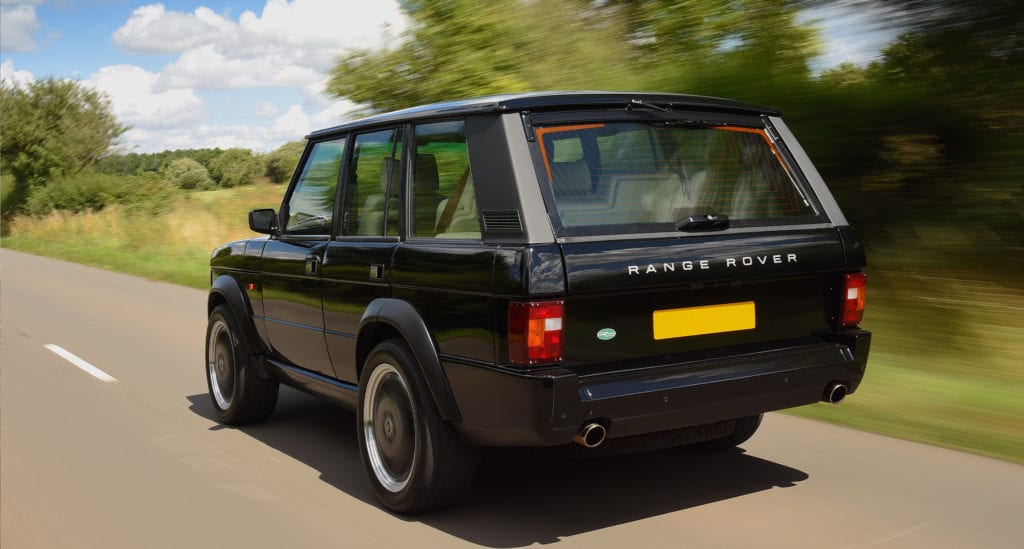New JIA Chieftain Range Rover /6.2-litre LSA supercharged V8-Autocar news
Classy overhaul of the Range Rover.
Meet the Chieftain, from Banbury-based JIA: a 1993 Range Rover transposed onto a Discovery 3 chassis, restyled inside and out, and endowed with General Motors’ 6.2-litre LSA supercharged V8. That’s 556bhp, 551lb ft and 0-60mph in around 4.5sec, which is more power, more torque and more get-up-and-go than any current Range Rover, all housed in a body that’s largely as Charles Spencer King intended with his 1970 original.
Of course, that’s a huge simplification. Jensen International Automotive, to give the company its full name, has spent the past few years restoring, re-engineering and modernising 28 (and counting) Interceptors and FFs such as the Interceptor R Supercharged we sampled.

This time, it took a 2004 Discovery 3 chassis and shortened its wheelbase by 345mm to accommodate a four-door Range Rover Classic’s body frame and panels, which are affixed via custom adaptors.
GRP bumpers and side skirts embolden the exterior styling, as do chunky wheel arches to swallow the Discovery’s wider tracks, and there are bespoke, period-style 20in alloys, too. A deeply gentrified cabin – drafted by a designer of luxury yacht interiors – adds mod cons, improved ergonomics and the hides of 22 cattle. Endless wiring has been fused to integrate systems from both the donor vehicles, the engine and the six-speed GM torque converter.
Upon meeting the Chieftain, you realise how imposing it is – especially when seen parked alongside an untouched contemporary. And while it’s much smaller than a current Range Rover, the Chieftain absolutely drips with attitude.
Inside, only the rear-view mirror and column stalks are of factory spec. The original seats, passenger grab-handle and distinctive steering wheel have been upholstered in fresh, soft Bridge of Weir leather and there’s Wilton carpet underfoot, Alcantara headlining and a completely redesigned dashboard that’s also sealed with rarefied cow.
An Apple CarPlay-enabled Alpine touchscreen has been tidily integrated, while there are billet aluminium and carbonfibre panels and lovely satchel-style leather pockets dotted about, too. Lest we forget how spartan early Range Rovers were, these are all momentous upgrades. The mix of materials and shades is quite eclectic, but buyers can customise at will.
Bottom of Form
Ergonomics are also much improved, with most of the switchgear now concentrated on the centre console and of respectable quality. The electric seat buttons seem a bit austere but easily trump the rudimentary, tacked-on originals and allow me to find comfort around the fixed tiller. Settled into the lofty, squashy but supportive driver’s seat, I’m only short of a contrast-collar shirt, garish tie and scarlet braces for the full mogul experience.
Firing up the JIA Chieftain Range Rover
My put-upon PA, three quivering note-takers and I would all fit in here quite comfortably, with enough glass around us to shame the observation car of the Rocky Mountaineer. And, thanks to the new chassis, the spare wheel vacates the boot in favour of the underside, so the splitting tailgate now reveals an even more cavernous space than before.
Igniting the LSA brings a subdued, throbbing idle. In fact, apart from the occasional jarring gearshift at low speeds (further transmission mapping is one of a few snagging items on this car, which is effectively a late prototype), the Chieftain is very easy going about town: plenty of lock and assistance to the steering, an easily modulated throttle, visible front corners and a ride that’s gentle enough (bar the occasional sharp-edged shock) all do their bit.
Indeed, the Chieftain is a road-focused Range Rover. It will tackle some rough stuff – especially since the Disco’s adjustable air suspension is retained – but JIA reckons owners won’t try it. For this reason, the centre differential no longer locks and there’s no low range, while the new chassis’ all-round double wishbones are far more tarmac-friendly than the original’s pair of coil-sprung live axles.
Don’t expect scythe-like cornering, though. Roll is pronounced enough to be the limiting factor in cornering speed, closely followed by the steering’s relaxed demeanour. Rather, corners are only a means to finding the next straight, where, from almost any speed, a suggestive flex of the right ankle swiftly kicks down one gear (if you’re feeling timid) or two (if you’re certified free of heart murmurs), and a massive and sustained thump of torque skelps you down the road as that brooding engine note becomes an unbridled scream. The LSA will pull strongly from 2750rpm, but keep it between 3500rpm and 6000rpm and this plush wagon becomes a raging hot rod.
Even on bumpy roads, though, it never feels unstable or unsettled. The air suspension hunkers down above 70mph to tighten the car’s otherwise loping gait and you can confidently clip along with your right hand on the ’wheel and your left elbow on the executive armrest. There’s little road noise, and wind noise is manageable; it can’t match a modern alternative for refinement, but I’d happily stick on some Gary Numan and beat a fast path to Deutsche Bank’s Frankfurt AGM in this thing.
We felt neither the traction control nor the ABS chime in – the Disco front and rear differentials and huge AP Racing brakes all being assuredly up to their tasks despite the significant roll, dive and squat angles at play in this softly sprung, 2386kg brute.
Is the Chieftain worthy of the Range Rover moniker?
The Chieftain isn’t the first hot Range Rover Classic, but even Overfinch never breached the 328bhp mark and JIA’s new machine is more a transformation than a modification.
Which means it takes about a year to build, and this in turn means the price to order a car in the same spec as this one is around £250,000: more than the average house price in England.
And yet there’s nothing quite like it. Land Rover’s ‘Reborn’ Range Rover Classics start at £135,000, but being restored to factory spec means they’re sparsely equipped, dynamically rudimentary and take 13.9sec to reach 60mph – ideal if you’re a stickler for originality but not great for real-world use.
And would there be anything more satisfying than a Chieftain in which to challenge a £162,700 Bentley Bentayga away from the lights? Few shall find out, but I’ll envy those who do.


